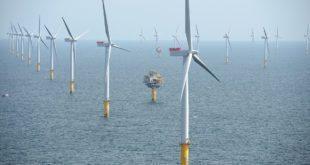I was asked, recently, about renewable energy credits, and the person asking was embarrassed to have to admit that they really knew nothing at all about them. So, I put together this list of things that you may find useful to know about renewable energy credits.
1. Definition. A Renewable Energy Credit, generally referred to as an REC or by various other acronyms, is a certificate showing that one megawatt of electrical power has been produced by an eligible, renewable energy source.
2. Purpose of an REC. The certificates created are tradable commodities that hold value in markets where companies or consumers have incentive to claim that they are purchasing power generated by renewable resources.
3. What is the market for RECs? There are two types of markets in which RECs hold value, compliance markets, and voluntary markets.
4. Compliance markets. In twenty-nine states, plus the District of Columbia, companies are required to purchase a certain percentage of their electrical power from renewable resources. For instance, California law requires that, by the year 2020 thirty-three percent of electrical power must be produced by renewable resources. Energy companies can meet this criteria by producing power produced by renewable resources.
5. How do RECs help companies in compliance markets? Companies in states with compliant markets, may find it is too expensive to convert their energy production facilities, or to build new production facilities that comply with the renewable resource requirements in their market. These companies can purchase RECs to meet the minimum requirements in their markets.
6. Voluntary markets. In voluntary markets, customers or companies may wish, for their own reasons, to purchase electric power that is produced by renewable resources. They may do so by purchasing power and credits from companies that produce electricity from renewable resources. RECs generally sell at lower dollar values in voluntary markets than is the case in compliance markets.
7. Who certifies RECs? The United States currently has no national registry for certifying Renewable Energy Credits. The Center for Resource Solutions is a nonprofit organization that administers a voluntary program attempting to provide accountability for Renewable Energy Credit claims. Their website is here: http://www.resource-solutions.org/index.php
8. State REC related policies, incentives, and information. The US Department of Energy provides a database of information on state, local, utility and federal incentives and policies that promote renewable energy and energy efficiency. It can be found here: http://www.dsireusa.org/
9. EPA. The US Environmental Protection Agency also provides information on regional tracking systems that have been set up for compliance markets, on its website. That information can be found here: http://www.epa.gov/greenpower/gpmarket/tracking.htm
10. What are the benefits, to us as consumers and citizens, of Renewable Energy Credits? RECs can provide us with some assurance that electric power production is using fewer non-renewable, carbon-based resources. This helps to reduce the amount of oil that needs to be imported for electric power production, and also helps us to reduce the amount of pollution produced to supply the electricity that we need in our homes and businesses.
Having done this research, I conclude that Renewable Energy Credits are one of the pieces that help in our ability to provide for our growing needs for electricity, while limiting the amount of pollution we produce in doing so, and are a small part of reducing our dependence on foreign energy sources.
source
 Alternative Energy HQ solar power for homes, wind energy, and bio fuel issues
Alternative Energy HQ solar power for homes, wind energy, and bio fuel issues






